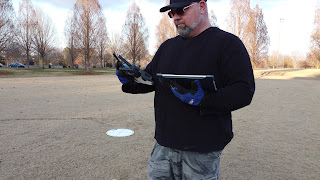Drone Tips, Test Flights and Maintenance Logs - 007
I’ve been having a frustrating experience with the battery situation on my drone and decided to buy an external battery carrier mount. The motive was to get away from the standard, and expensive, battery and go to the generic variety with higher output. There are some tried and true best practices that come with test flying a drone. A test flight isn’t just for R&D, it’s for the “return to service,” as the FAA says, after maintenance or modification. The motive is to exercise an extra bit of safety, imagine the alternative, showing up on a busy video shoot with an “unproven” aircraft so to speak.
Remember to not fly over anything that you wouldn’t want to crash into, especially people, unless it’s an uncle you don’t like, just kidding. One concept to keep in mind is to anticipate where your drone could end up based on direction of flight. The best illustration of this is used by manned aerobatic airshow performer pilots that create an aerobatic “safety” box to ensure any maneuver they do won’t end in the spectator area. If they want to do a quick turn before the crowd the pilot determines how soon they need to initiate the turn based on the kinetic energy potential if a failure, engine or structural, would happen at that time.
One of the FAA requirements is to keep logbooks on each of your aircraft (see manned aircraft maintenance logbook below). Electronic or old school hard copy is acceptable but can be subject to FAA inspection if requested. There’s a well worn rule in the manned pilot world that the pilot is the only one that can “return the aircraft to service” after maintenance. While drones pilots don’t fall under the manned rules it’s a good practice to incorporate the philosophy by logging maintenance and test flights. By the way, flights can be logged in the pilots logbook notated as a test flight for the specific aircraft and logged in the maintenance logbook, a frequently overlooked practice.
The good news is that if you fly incorporating basic safety principles then there shouldn’t be an issue. Logging maintenance, repair and modifications in the maintenance log requires an intentional effort. However, logging flight time tends to be easier, since many platforms automatically perform this function and if not, pilots tend to like the kudos of documenting flight hours. FYI, flight time is shown in tenths of an hour, for example .1 is 6 minutes of flight time. Keep in mind the clock starts at the initial rotation of the propellers with the stipulation that the intent is to fly. So if you are doing short flight hops with a lot of time idling to check the systems it all counts as flight time. What are your best practices when it comes to test flights and the logging thereof?
TC Freeman is the Chief Instructor for the RemotePilotAssociation.com (RPA) and has a passion for helping recreational and commercial drone pilots learn to fly and earn FAA commercial Remote drone Pilot certification through live, hybrid or self-study courses.
Get our FREE RPA Newsletter by signing up on the homepage of the RemotePilotAssociation.com website.
#drone, #dronephotography, #dji



Comments
Post a Comment